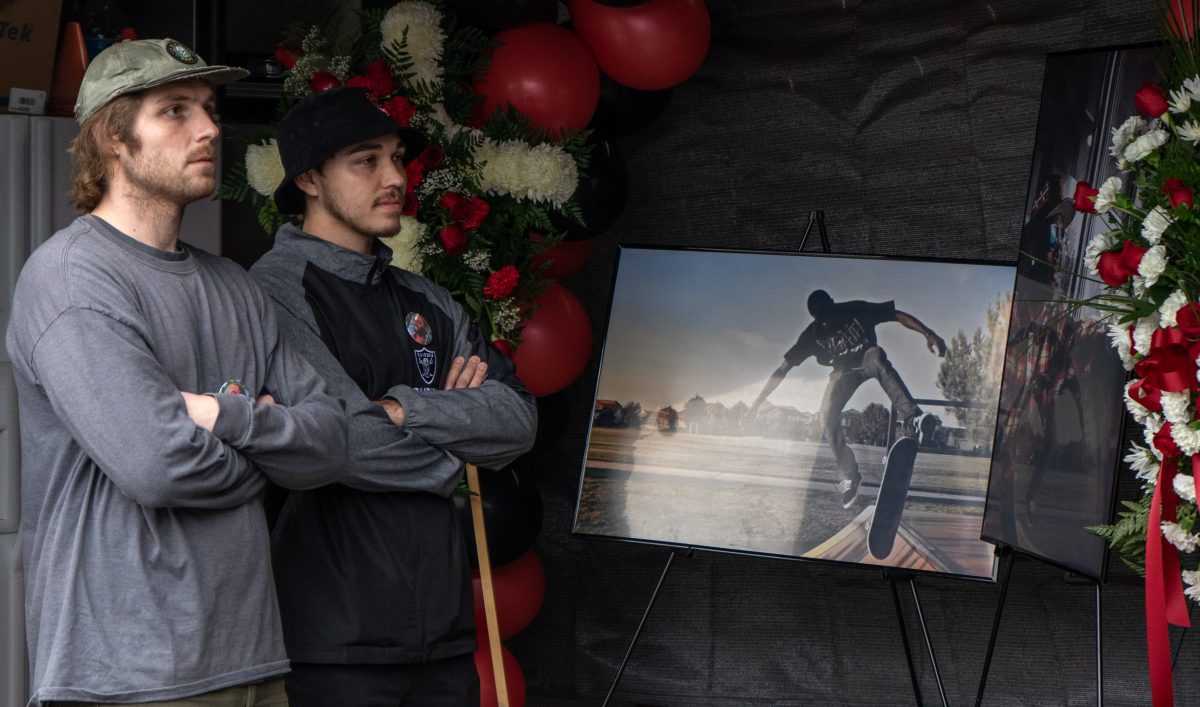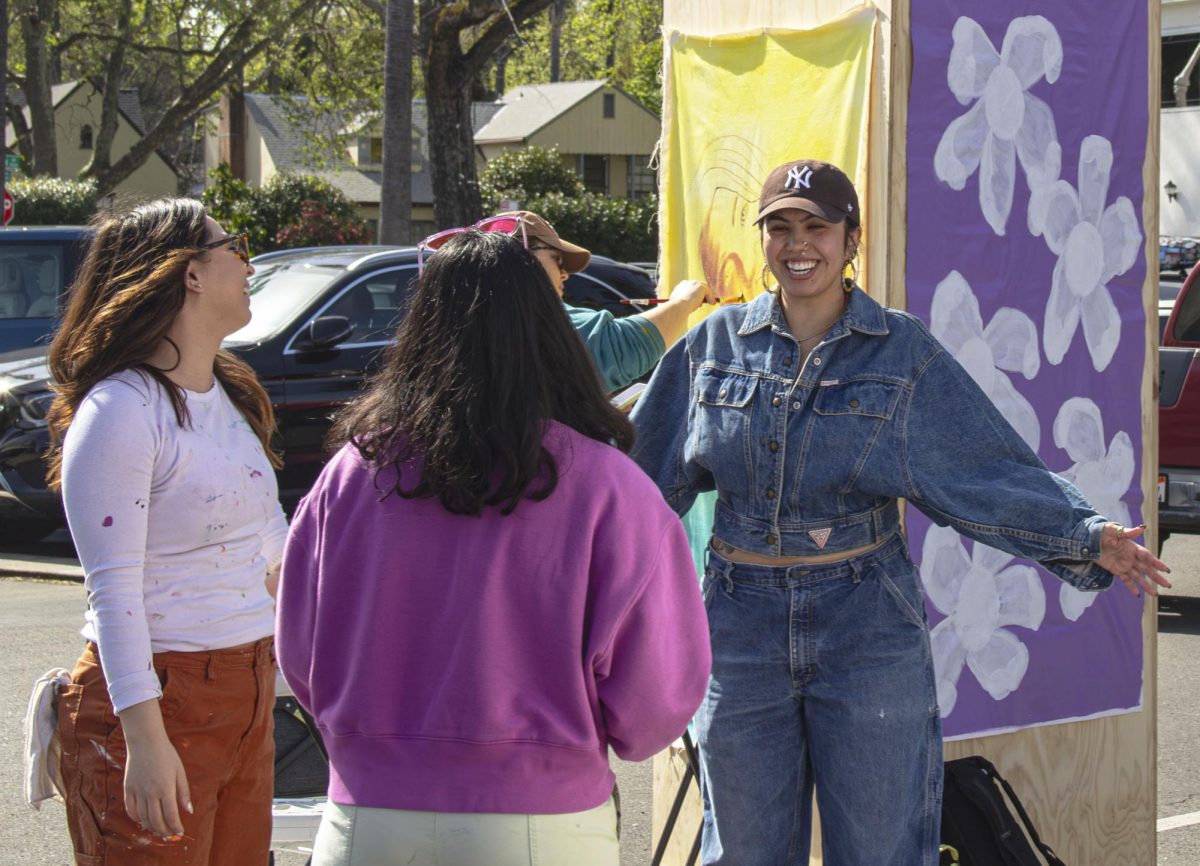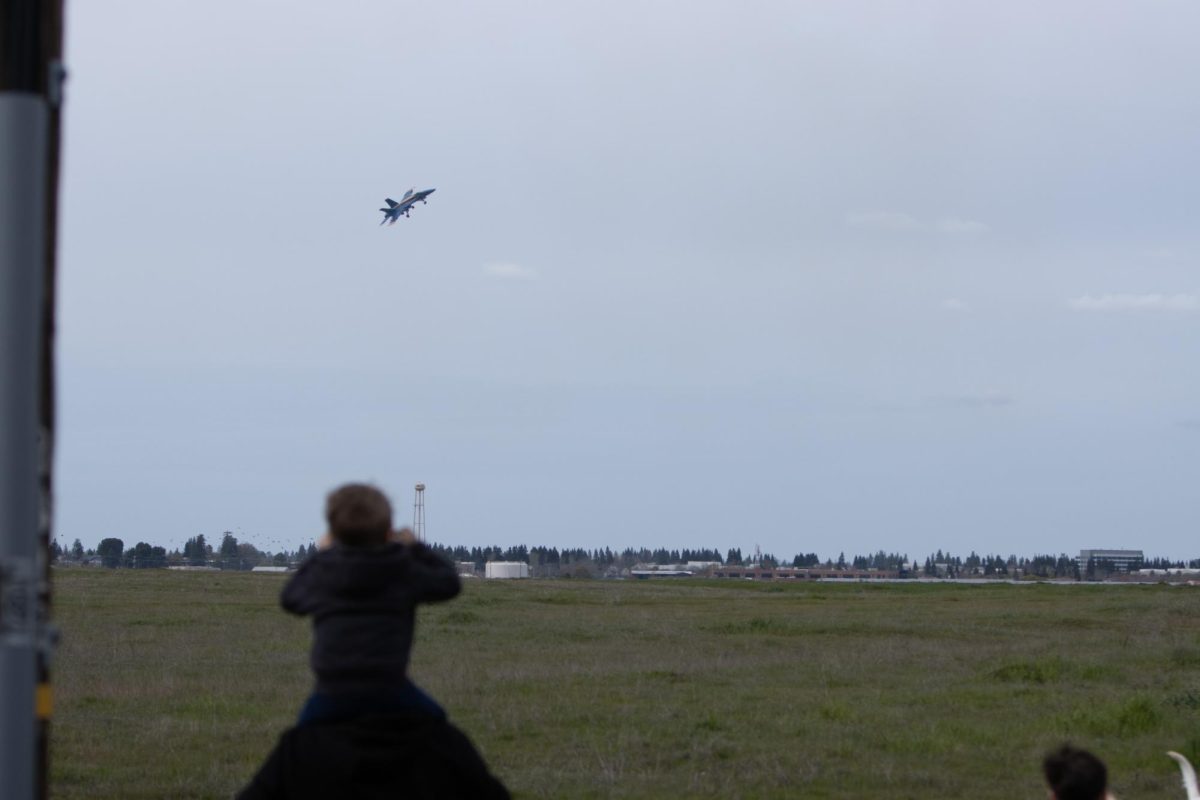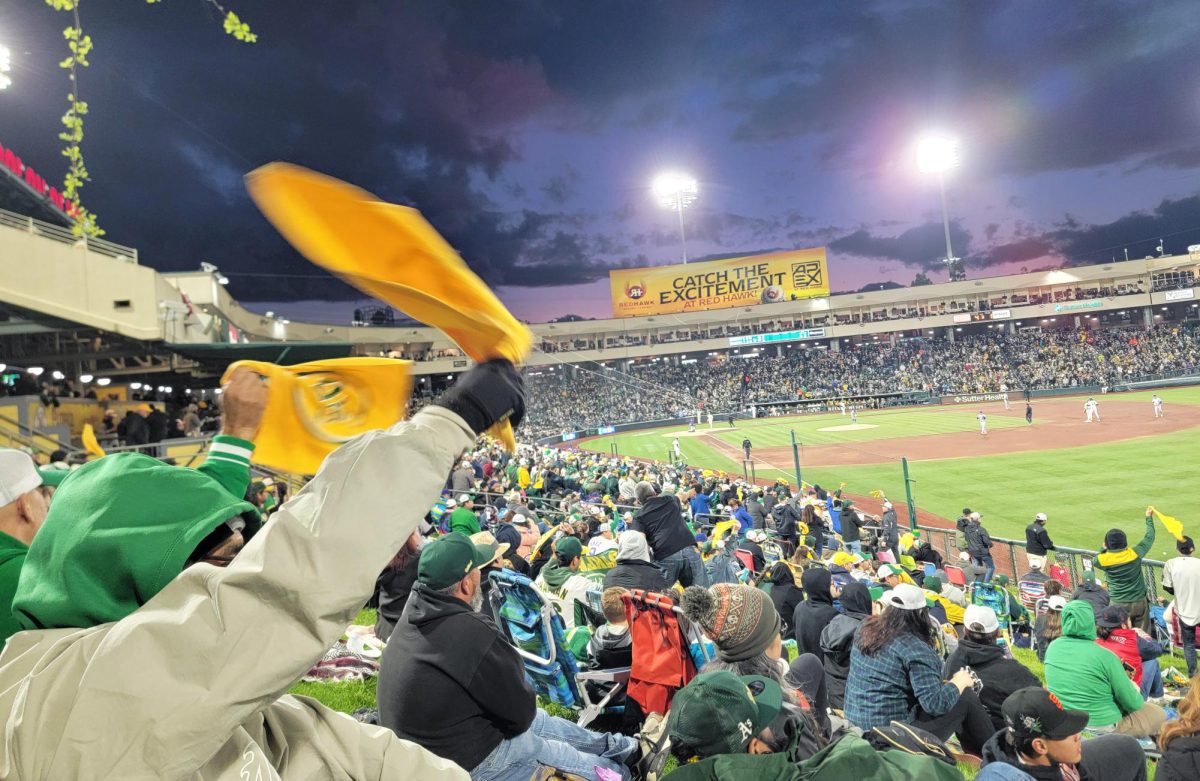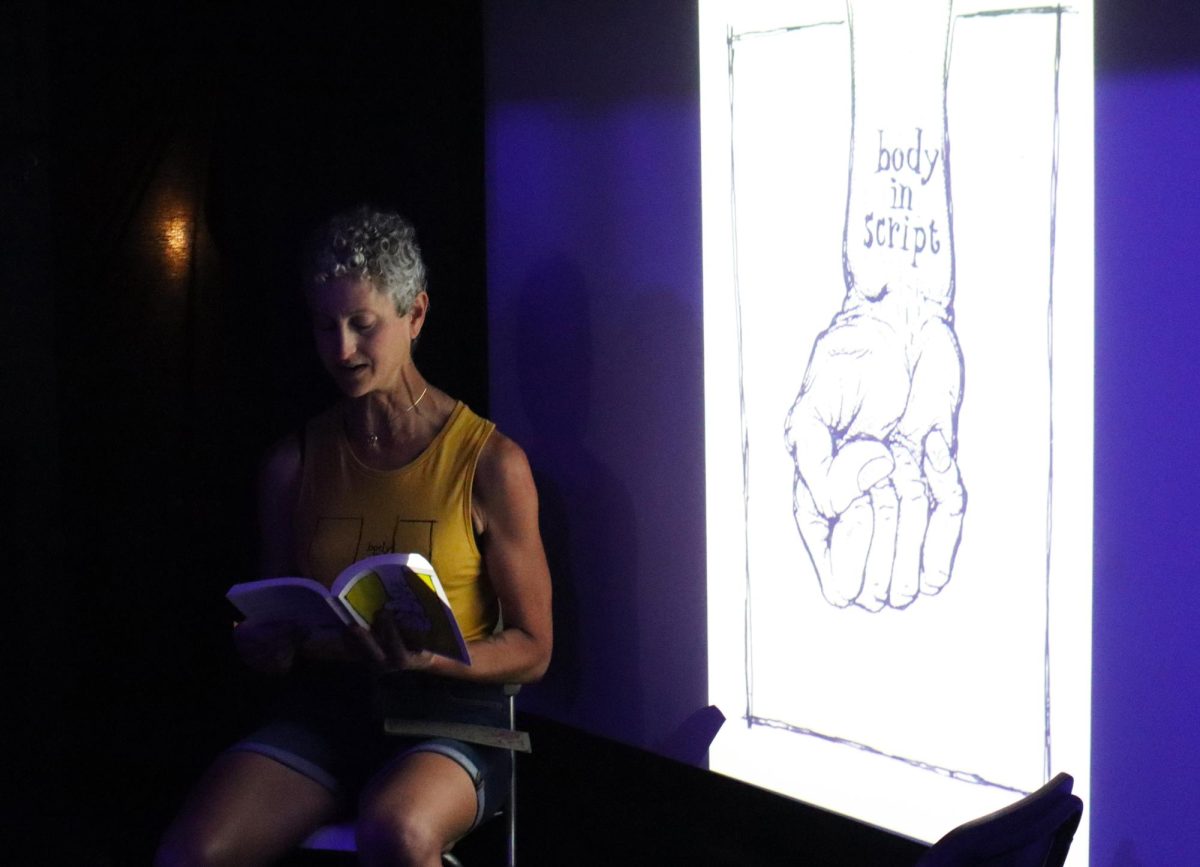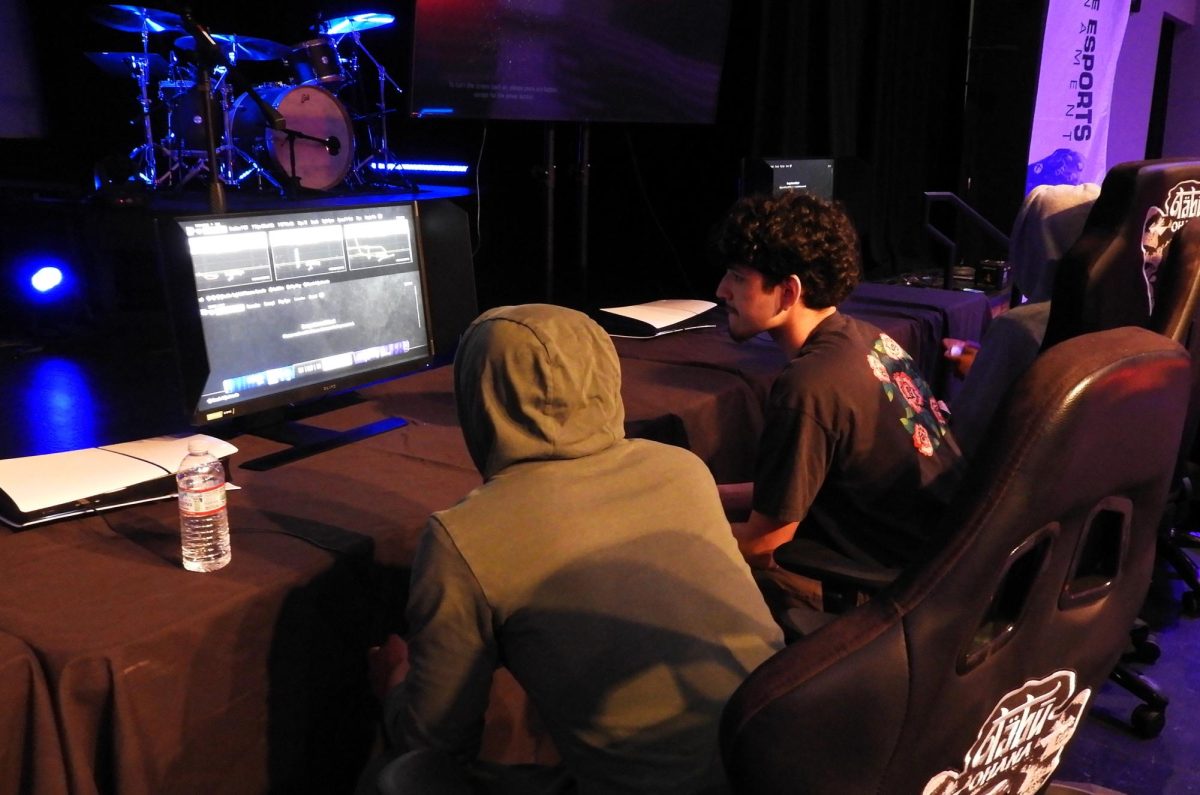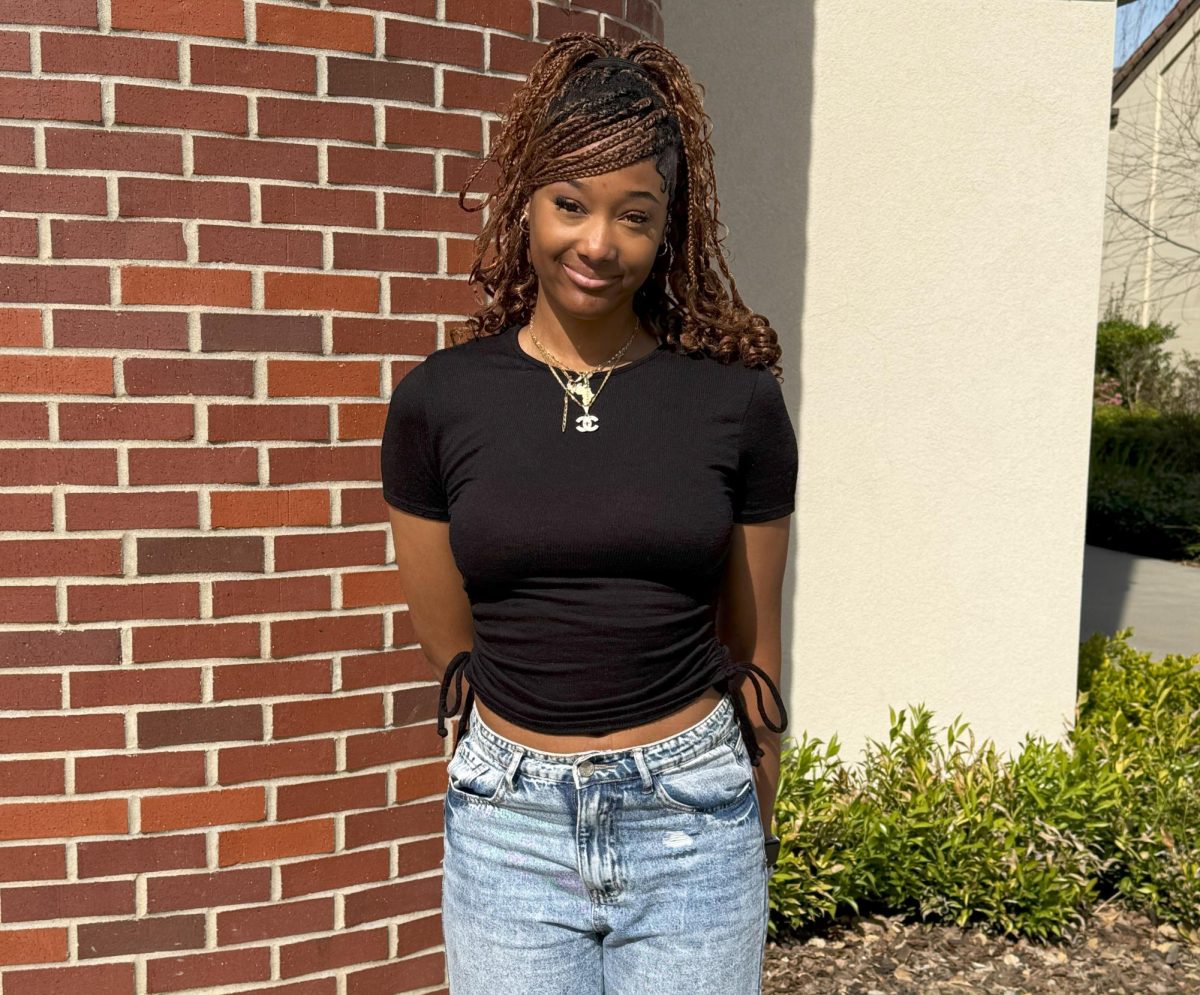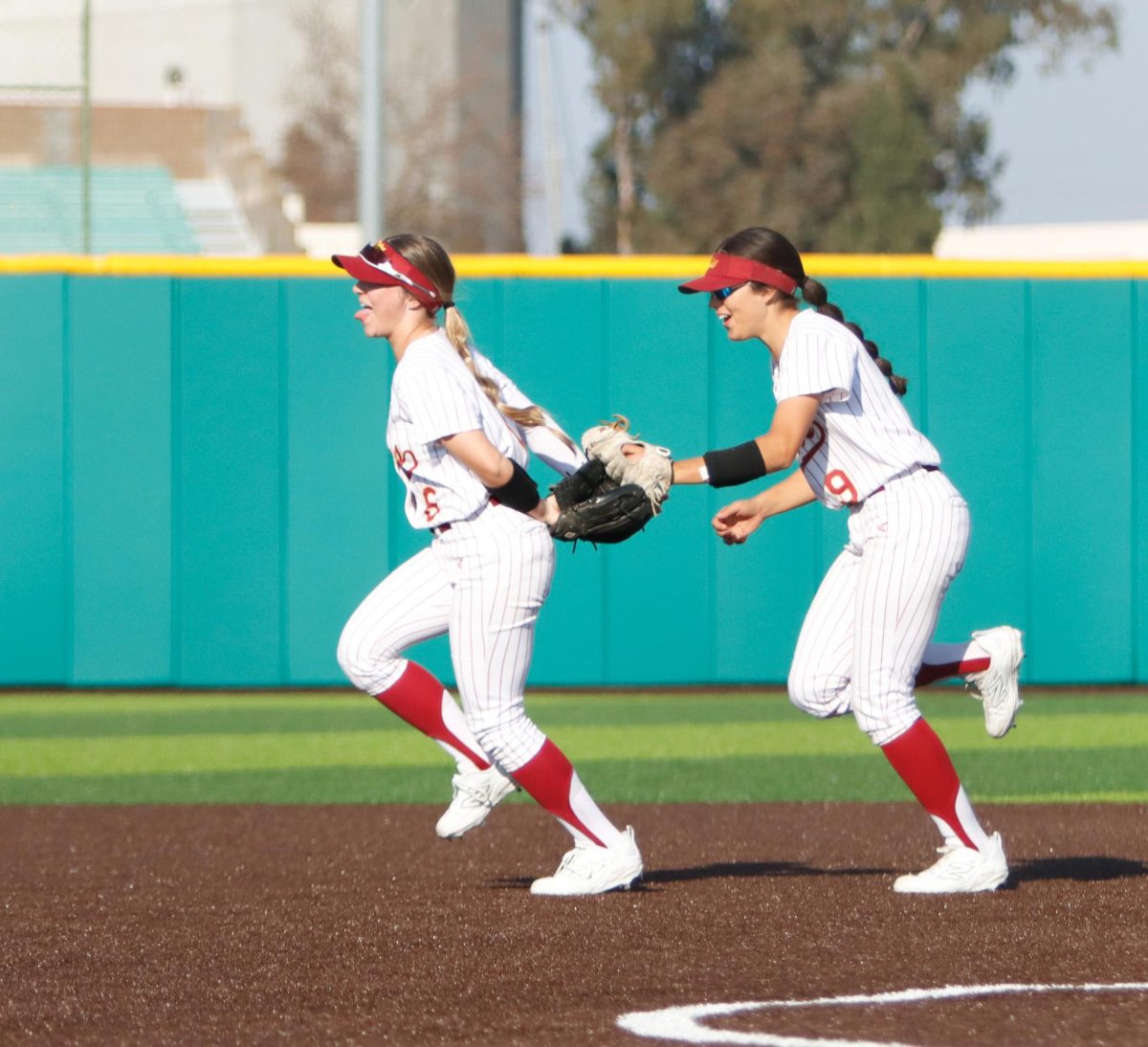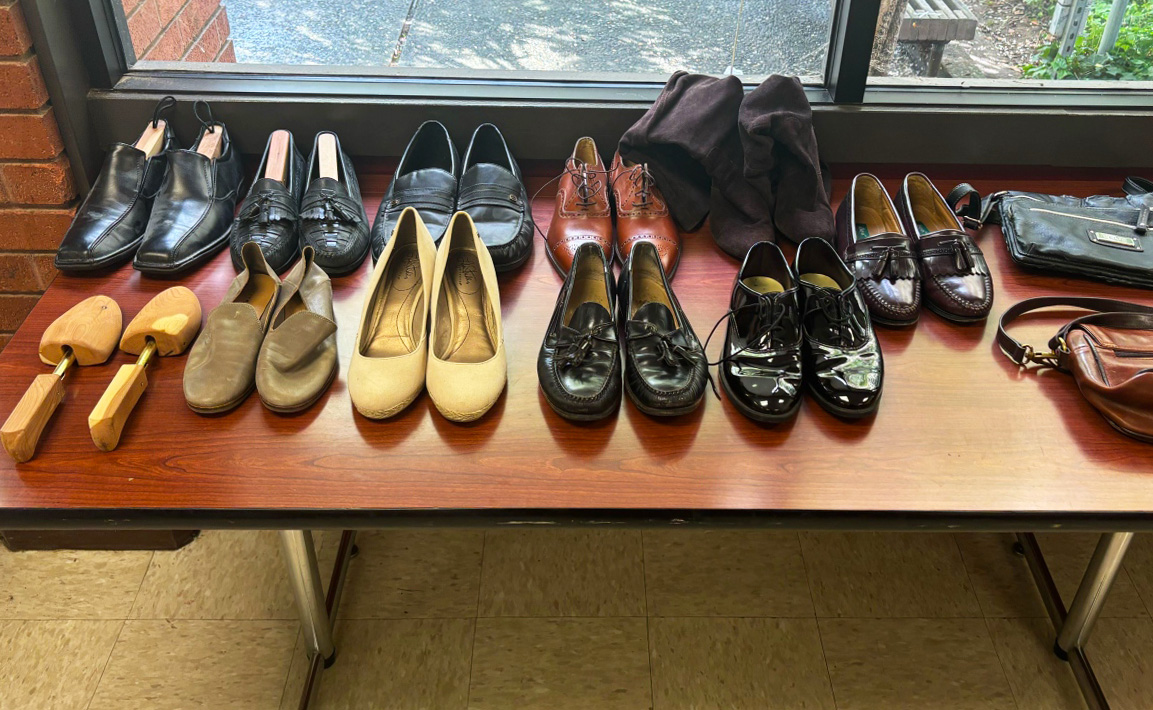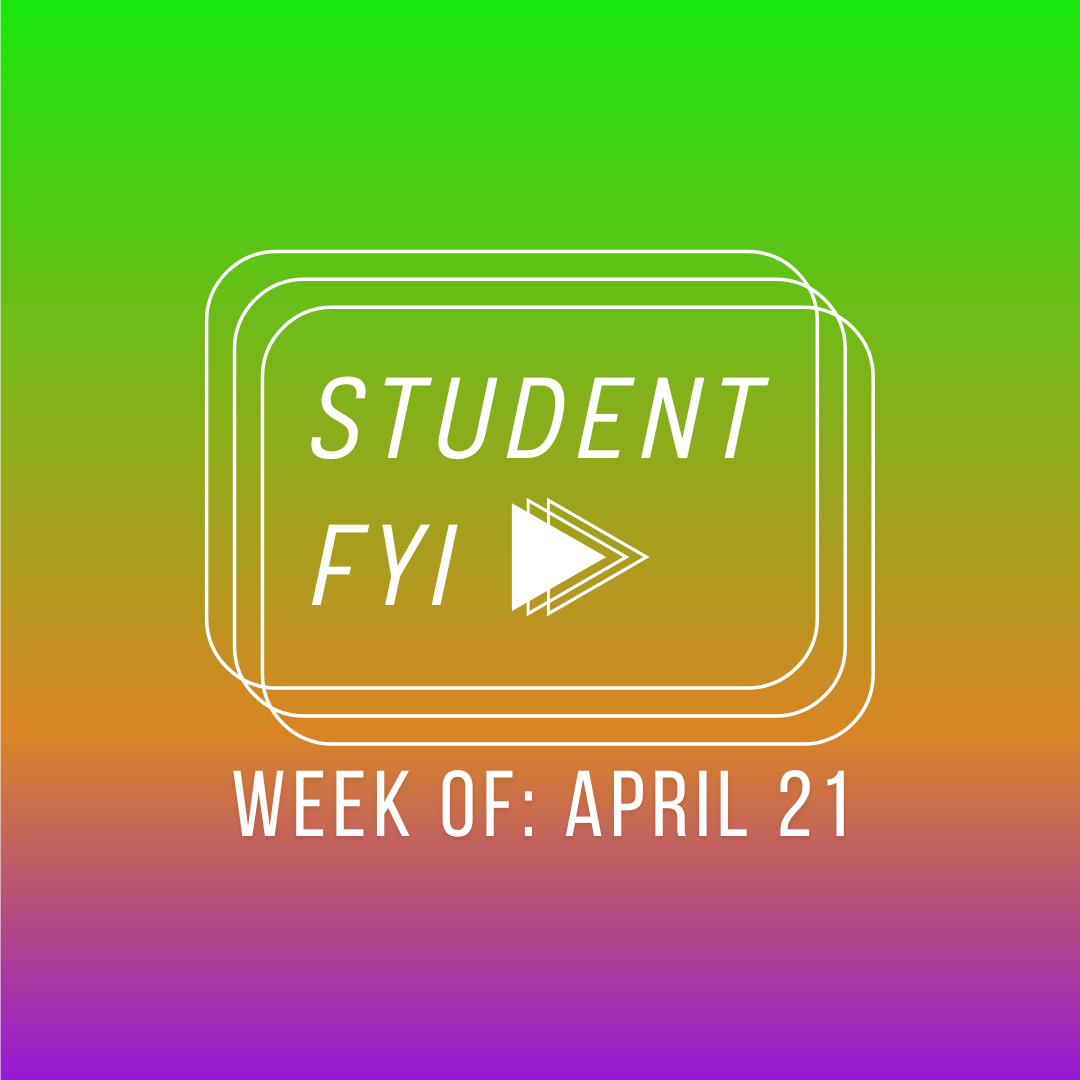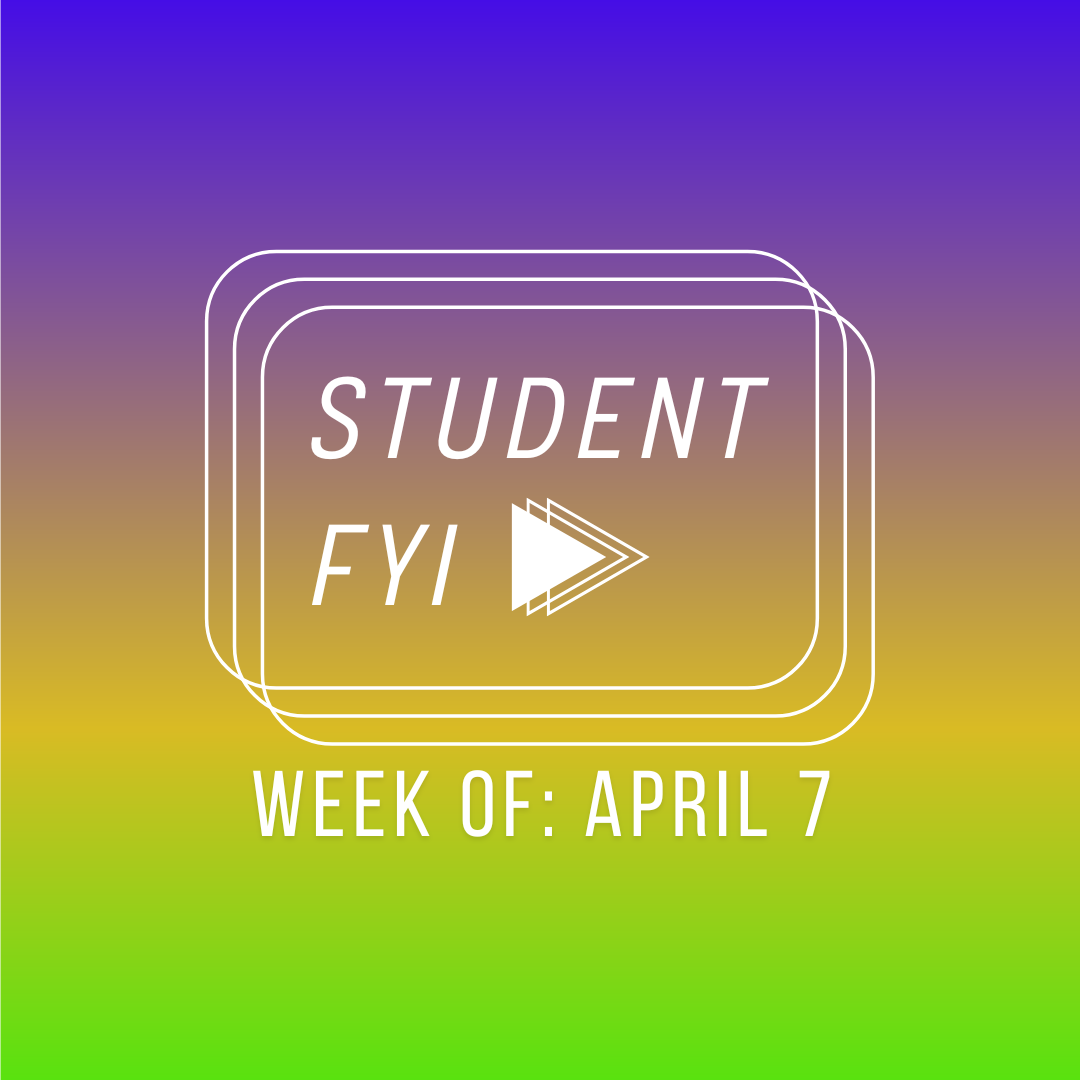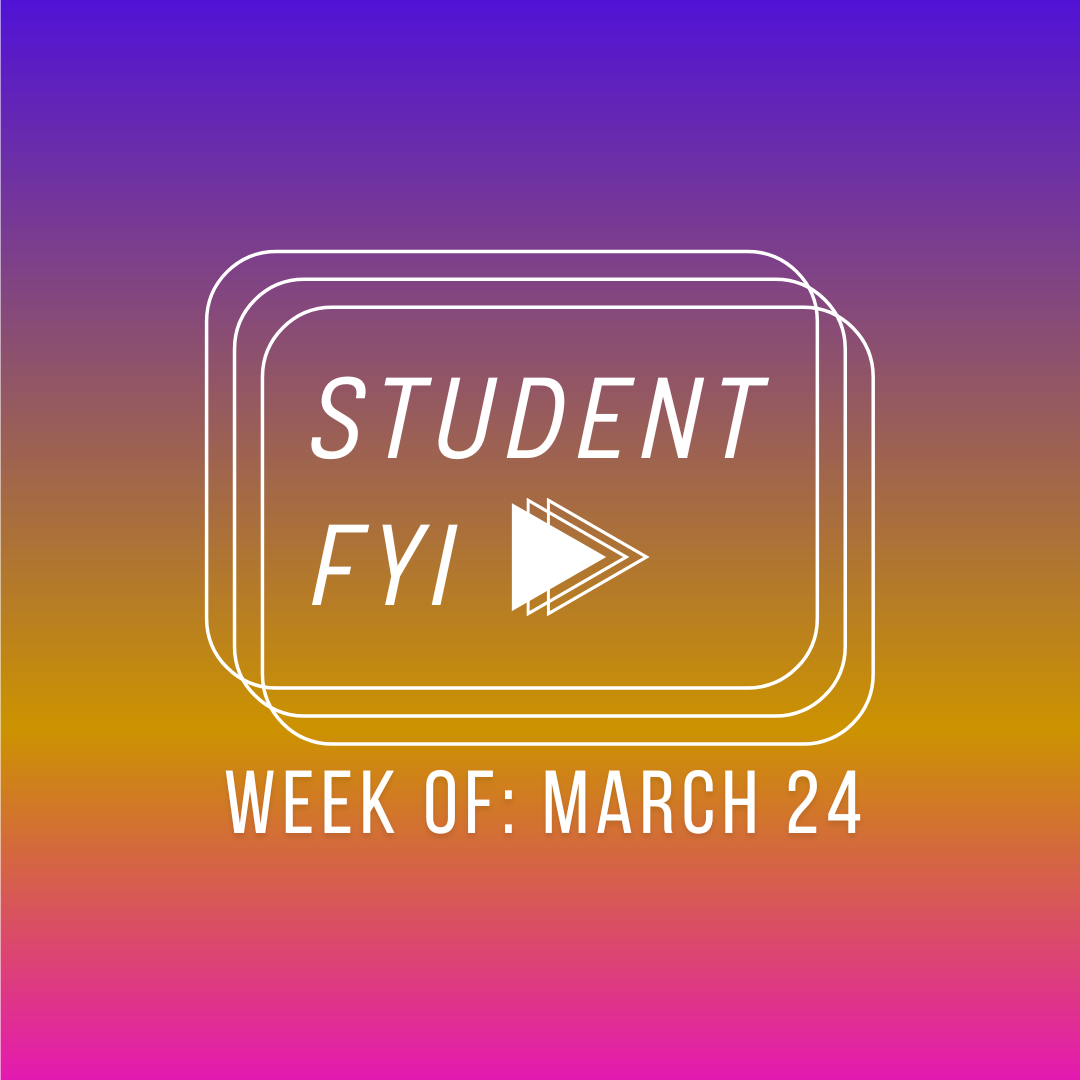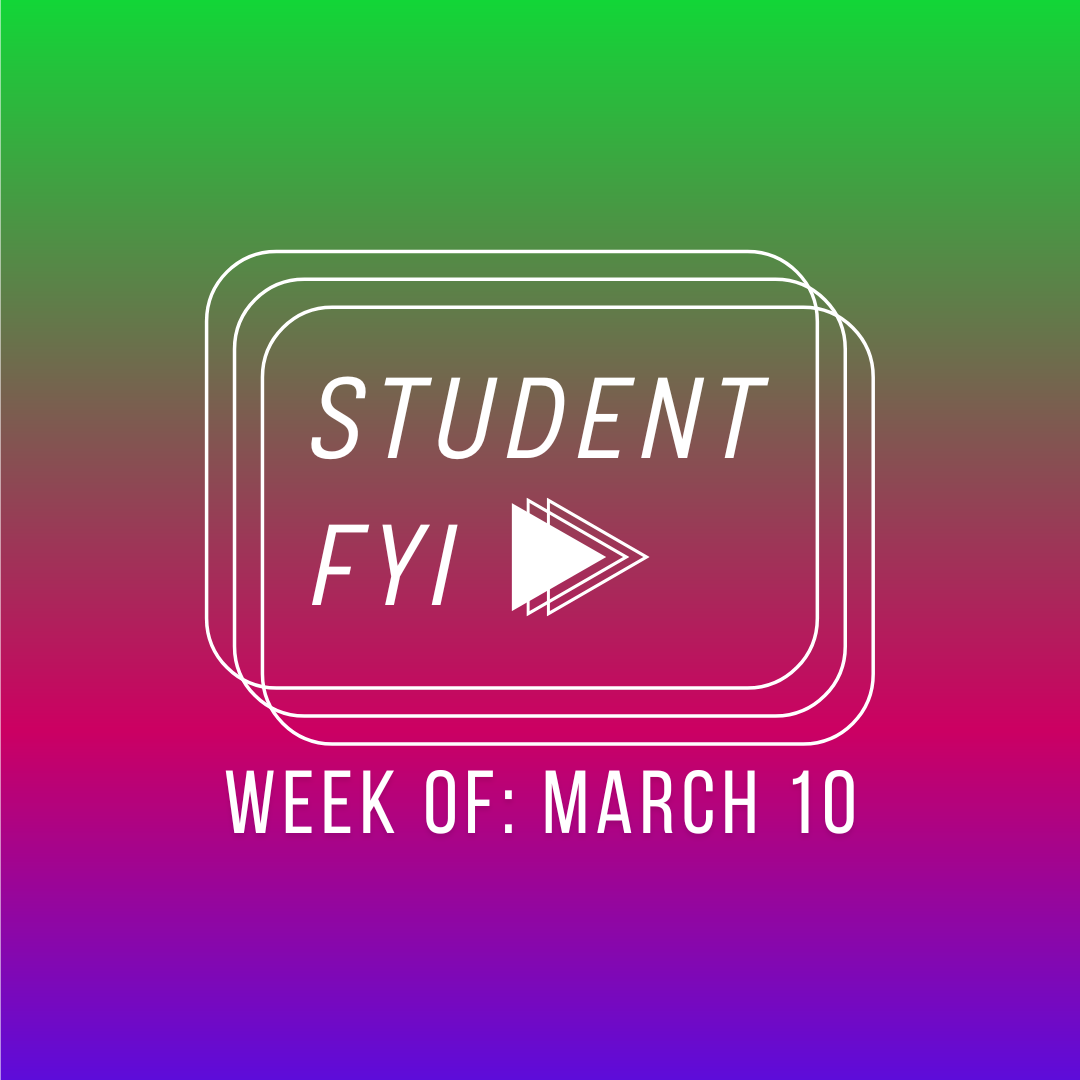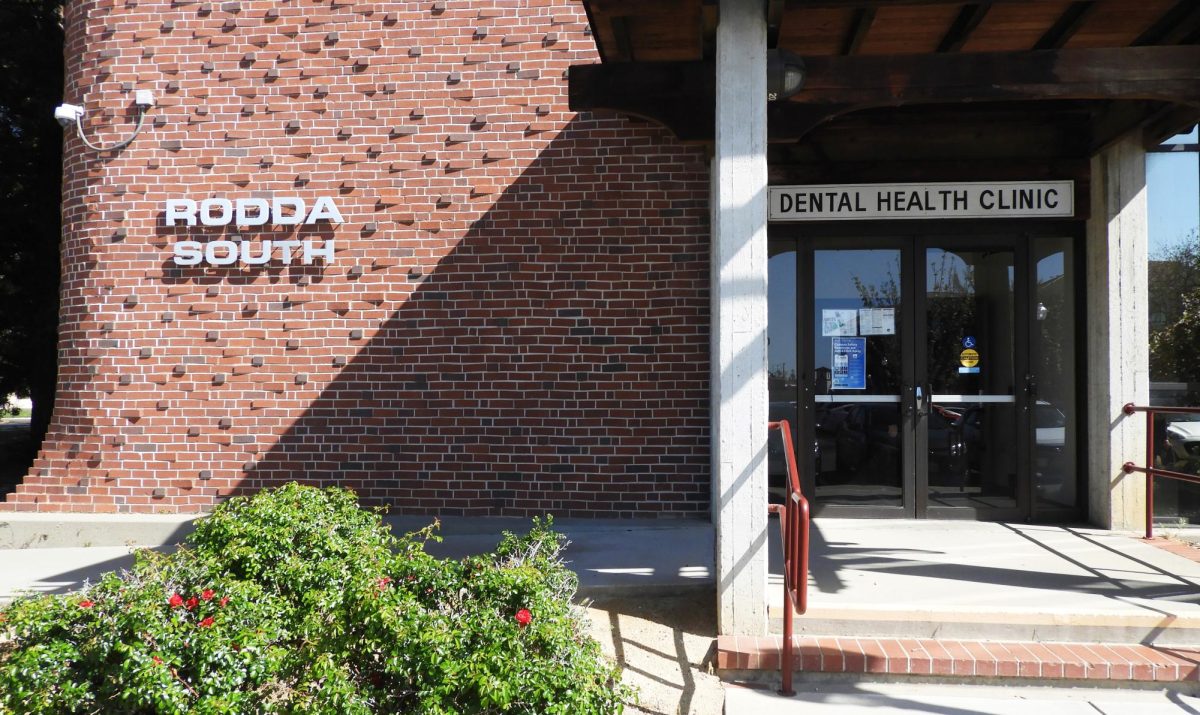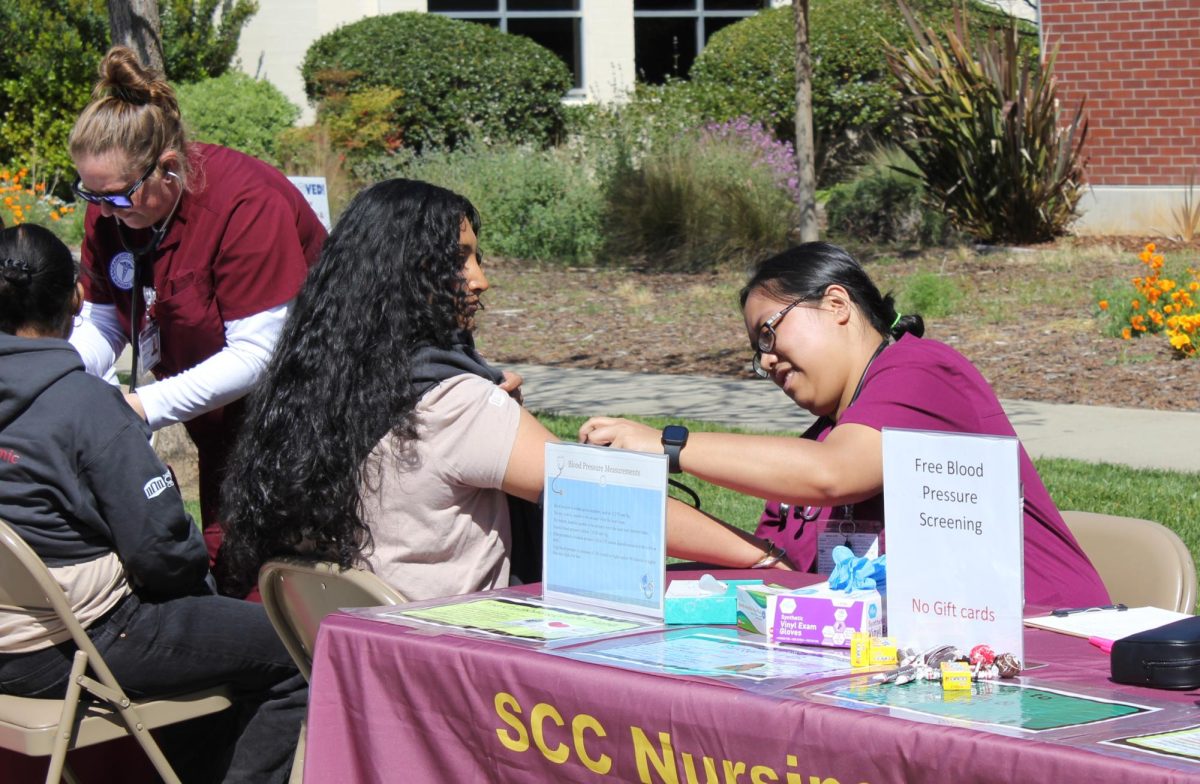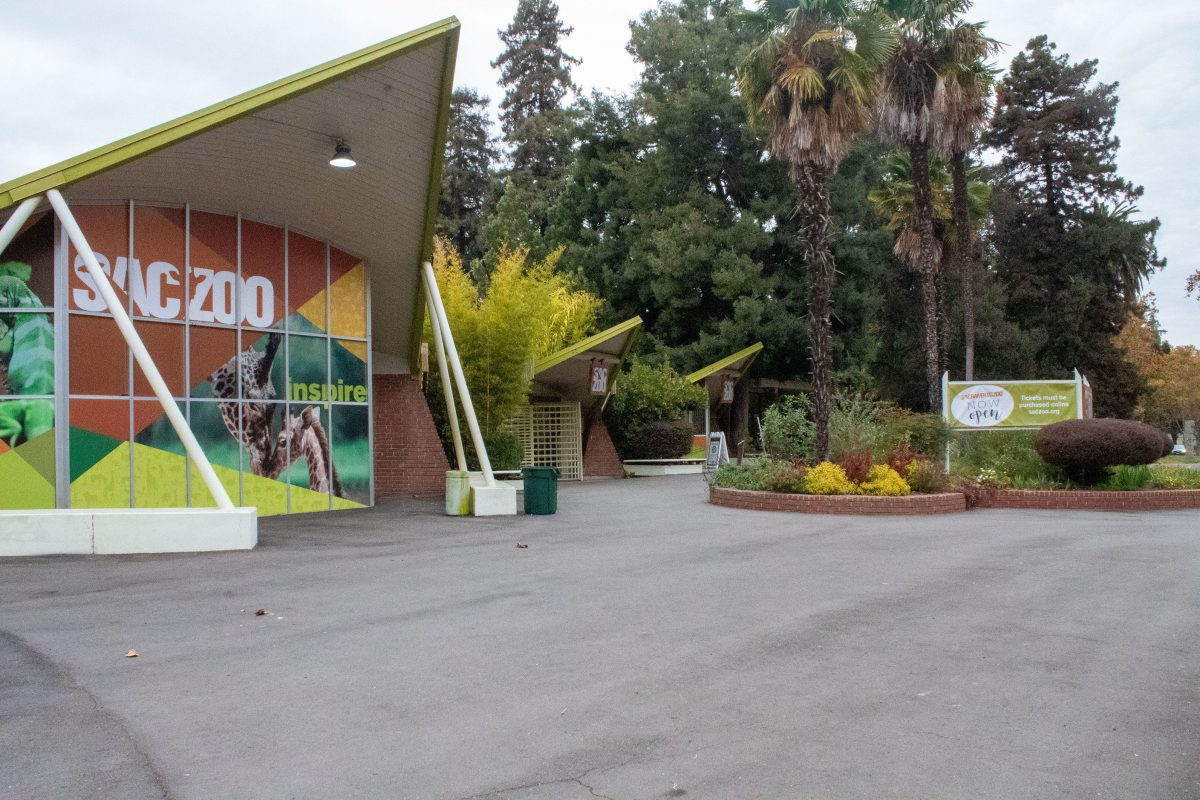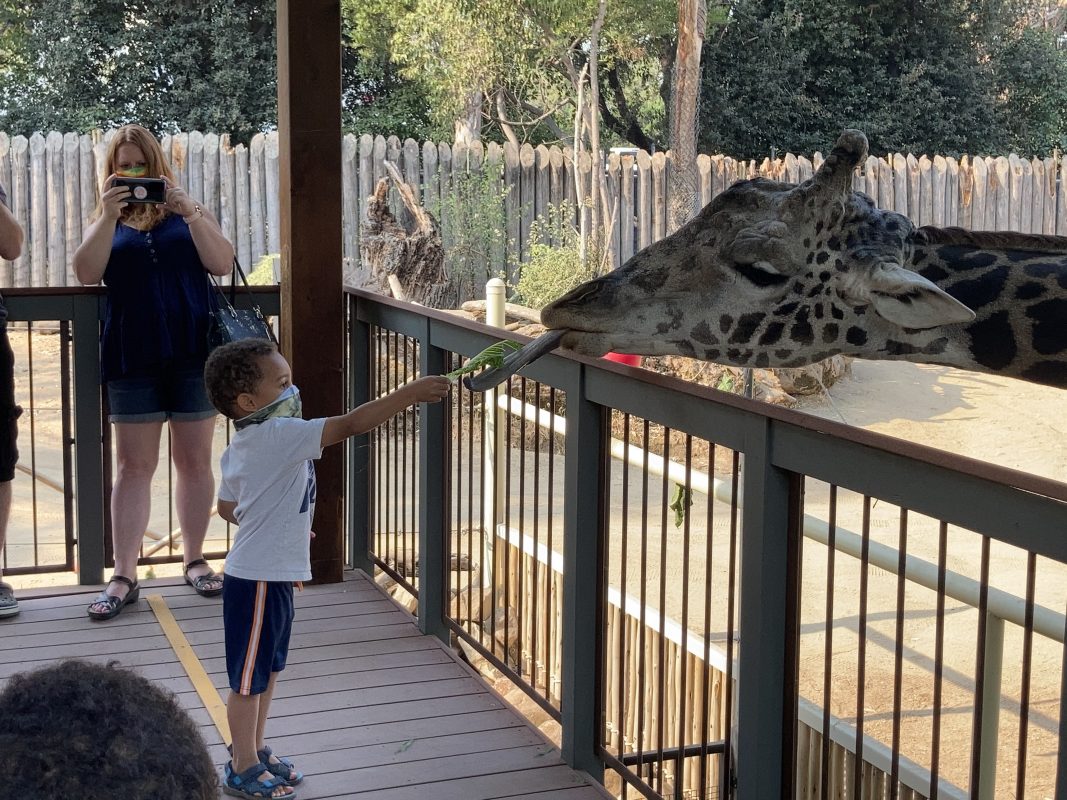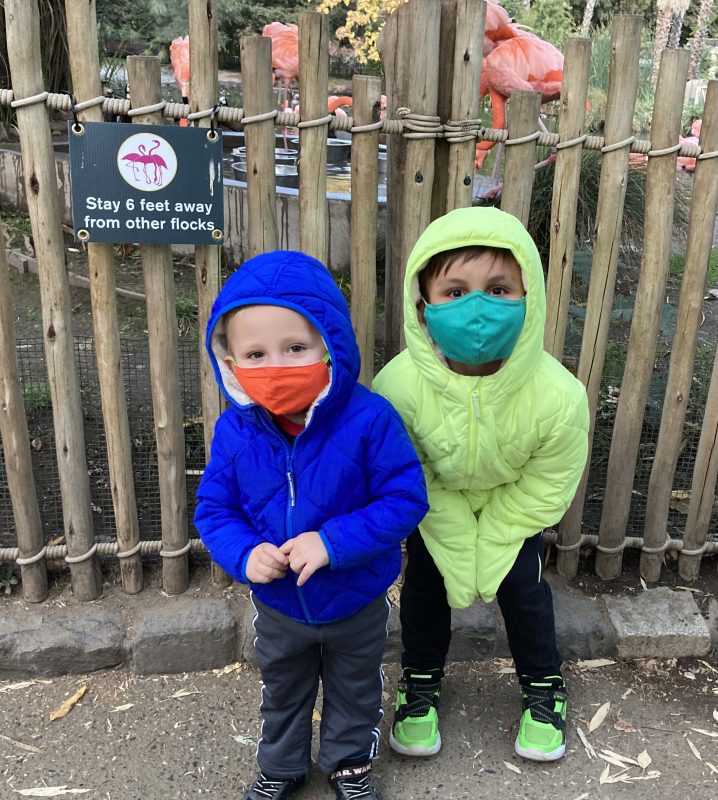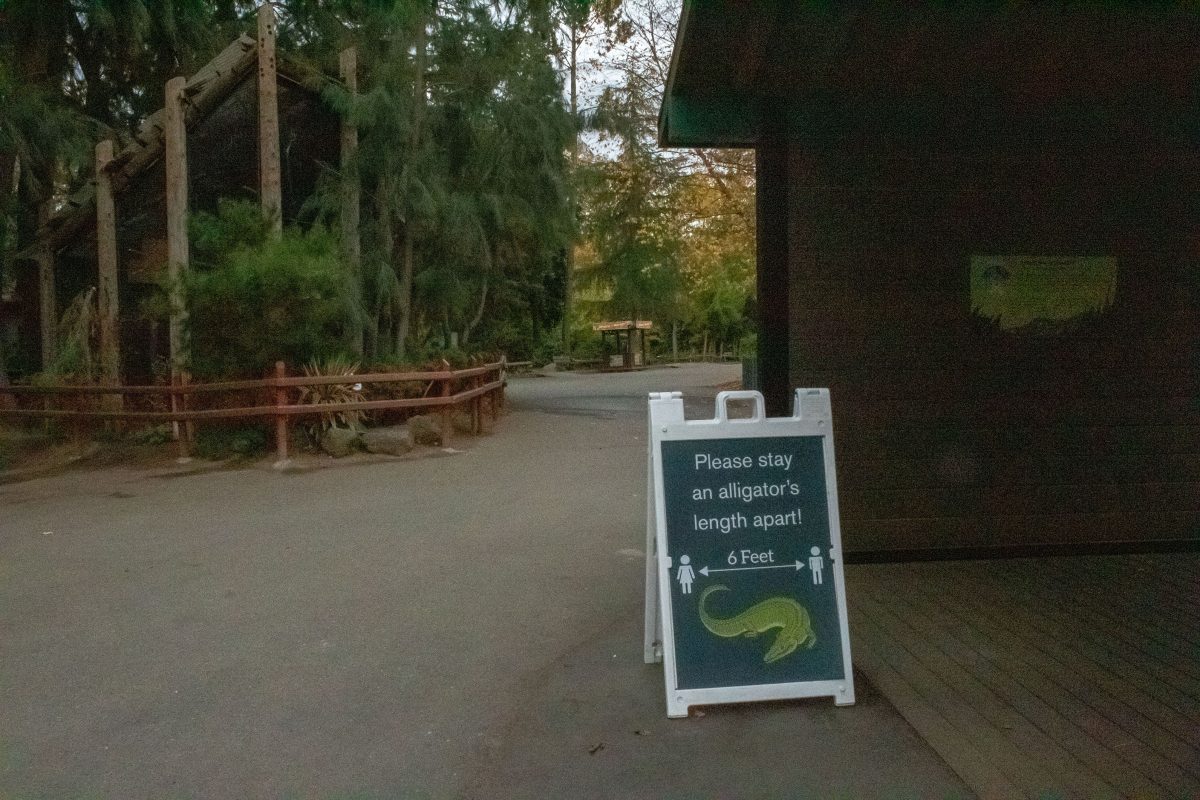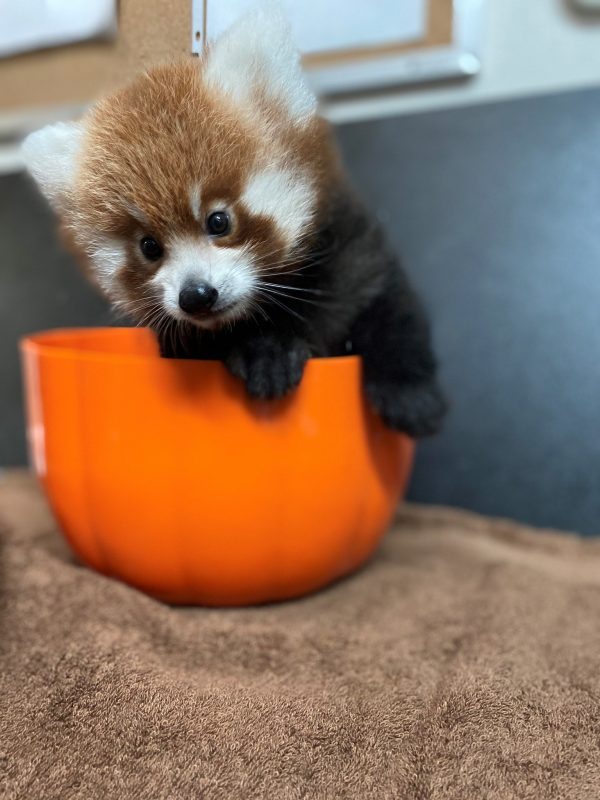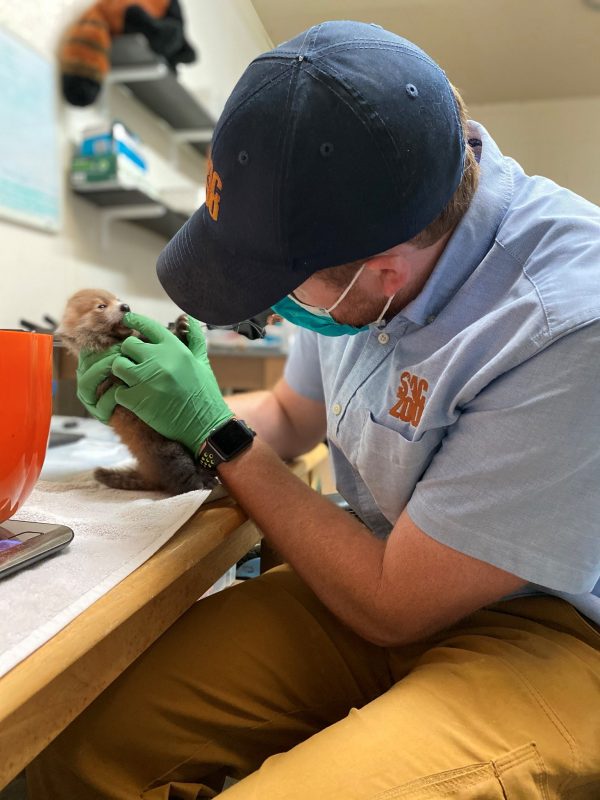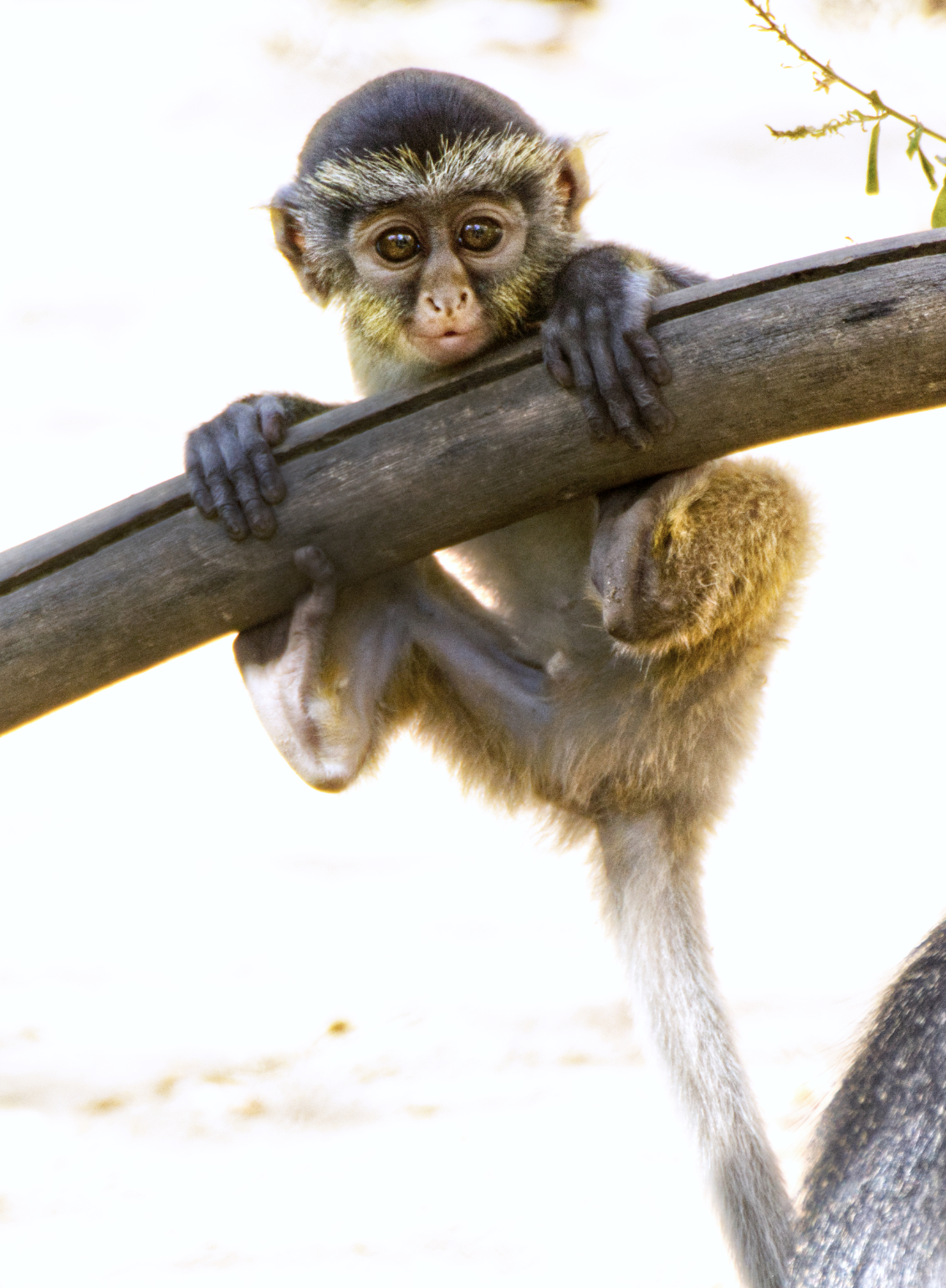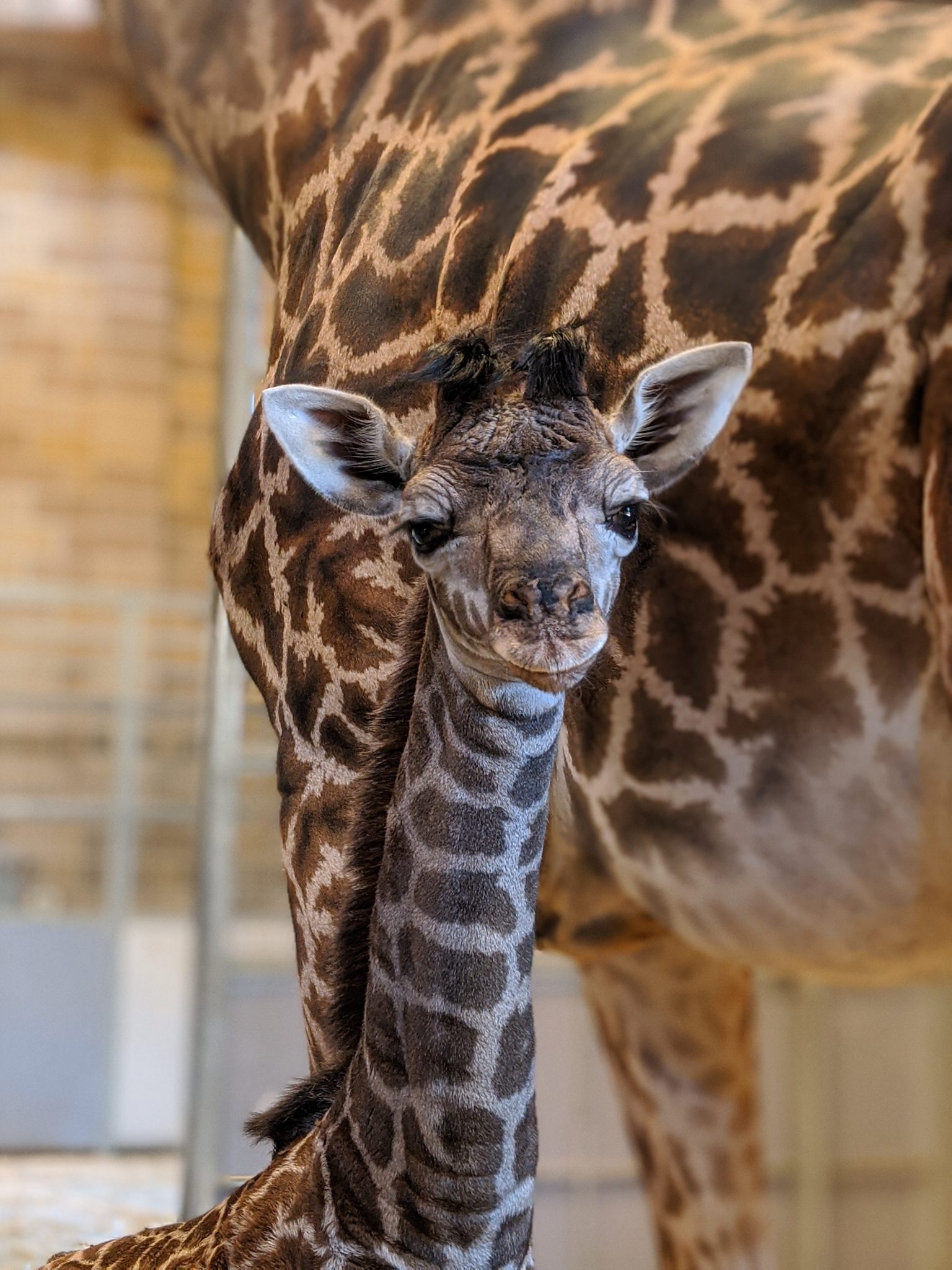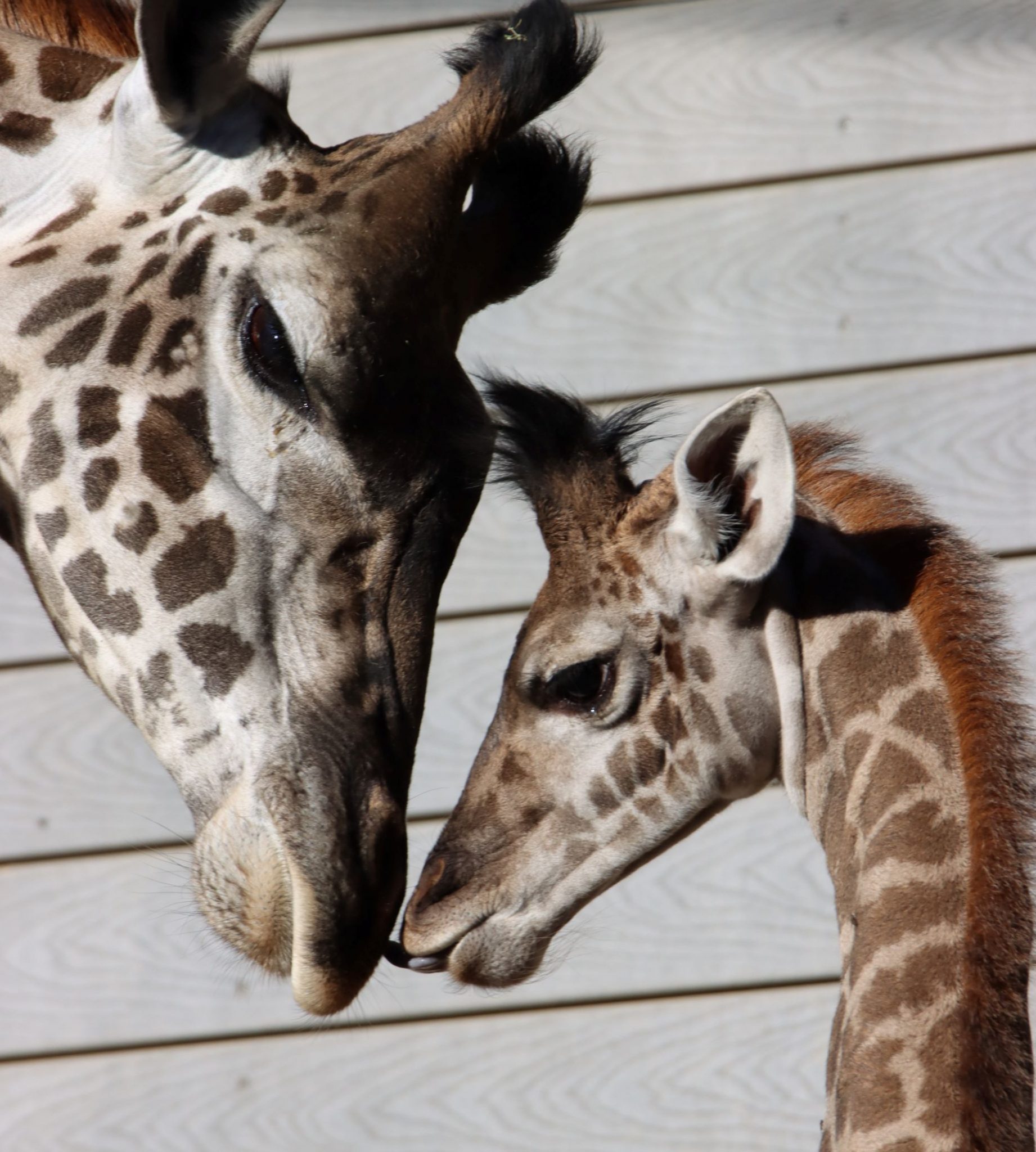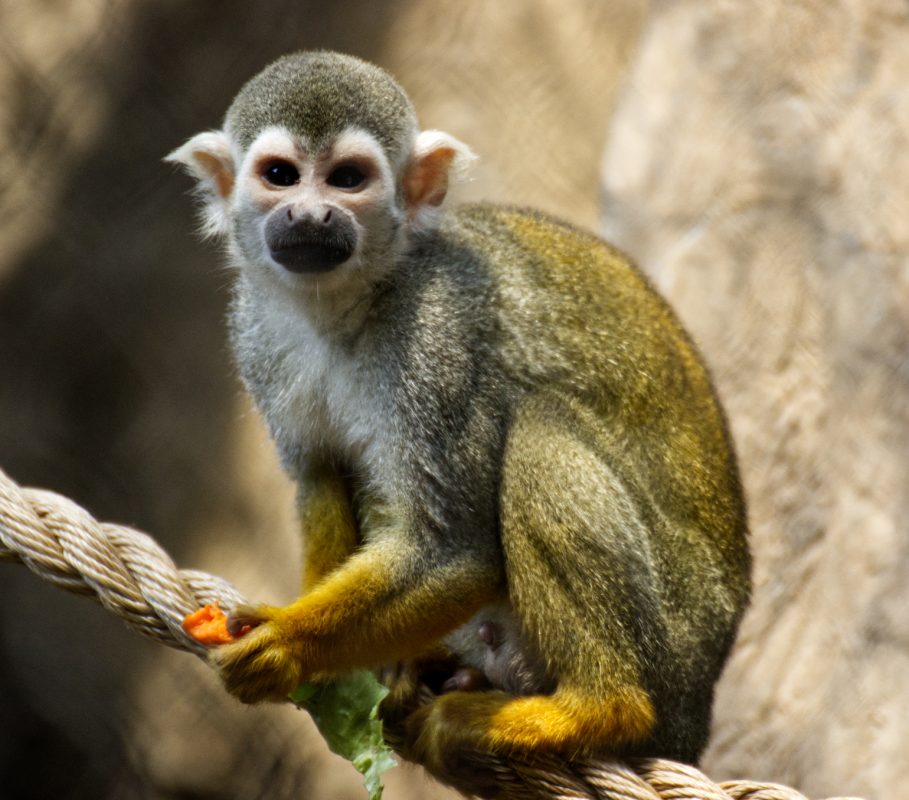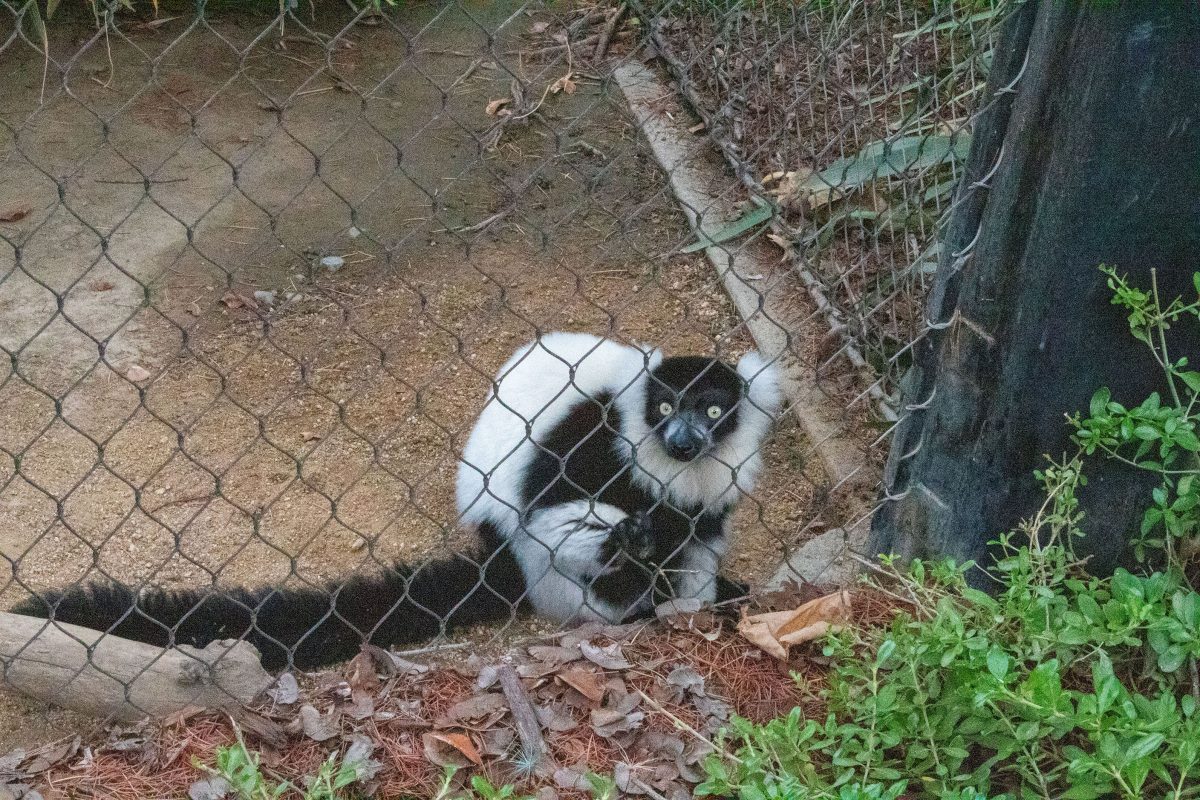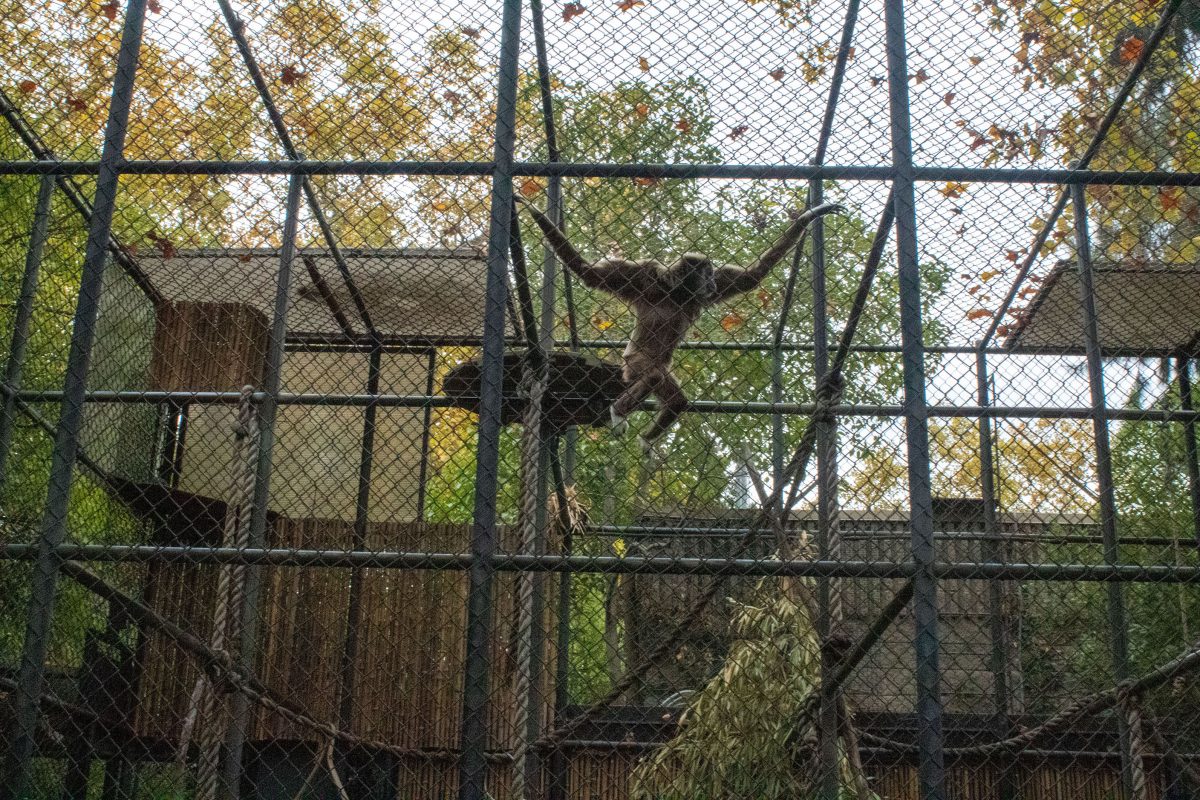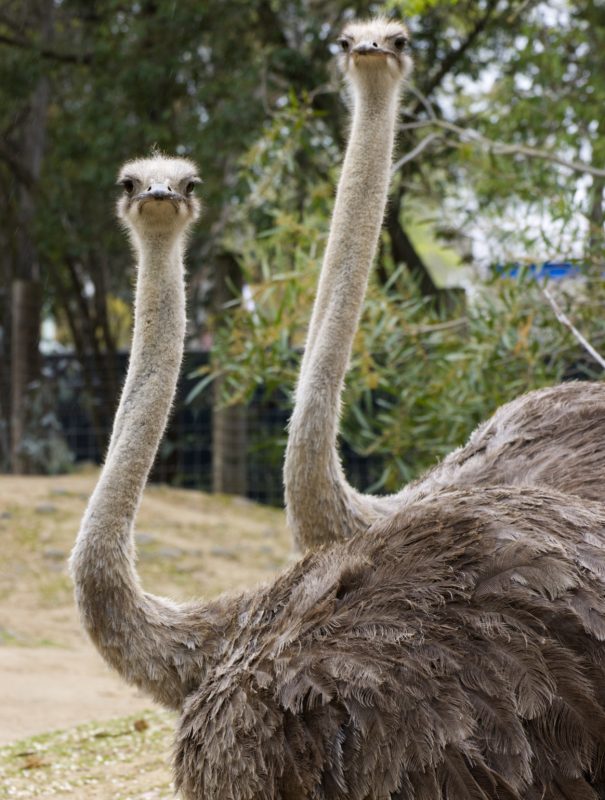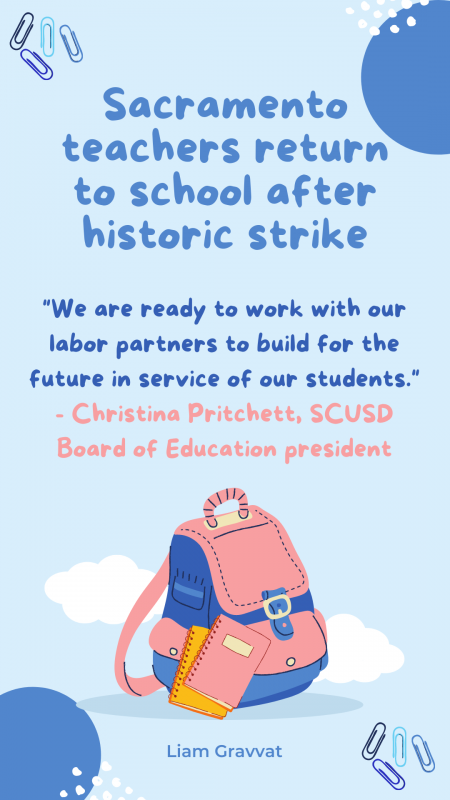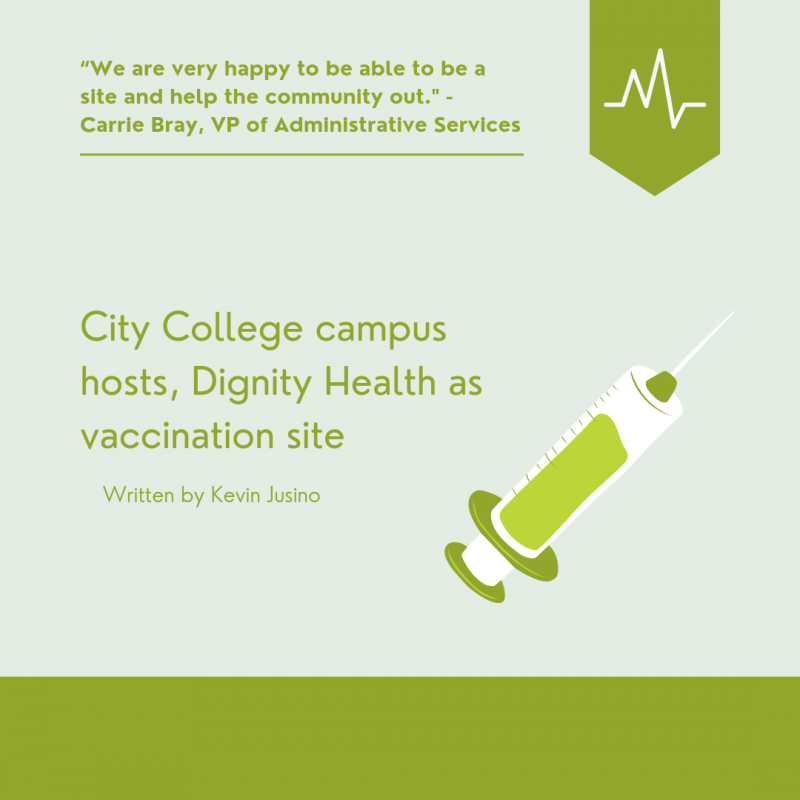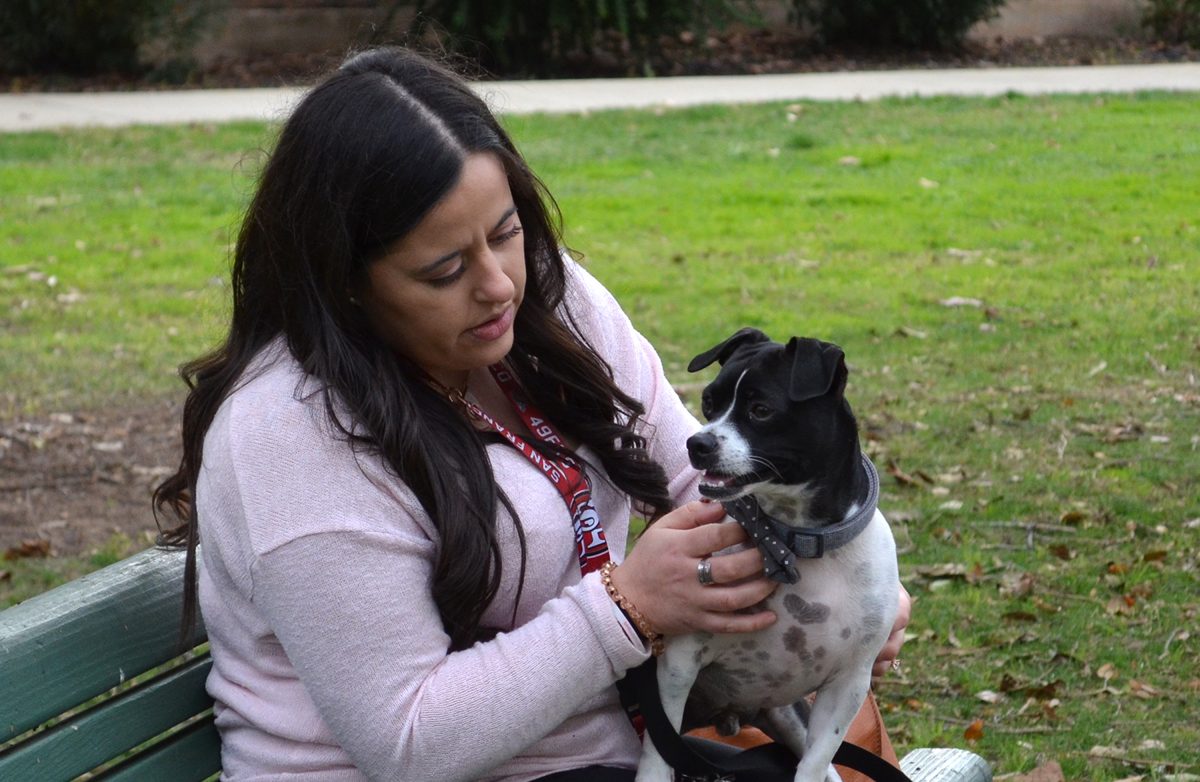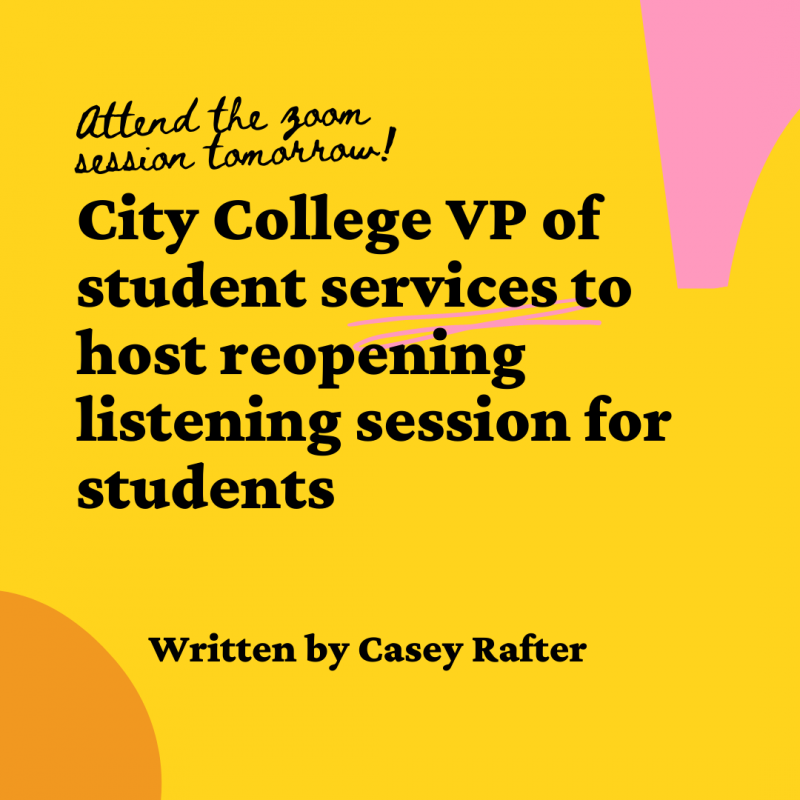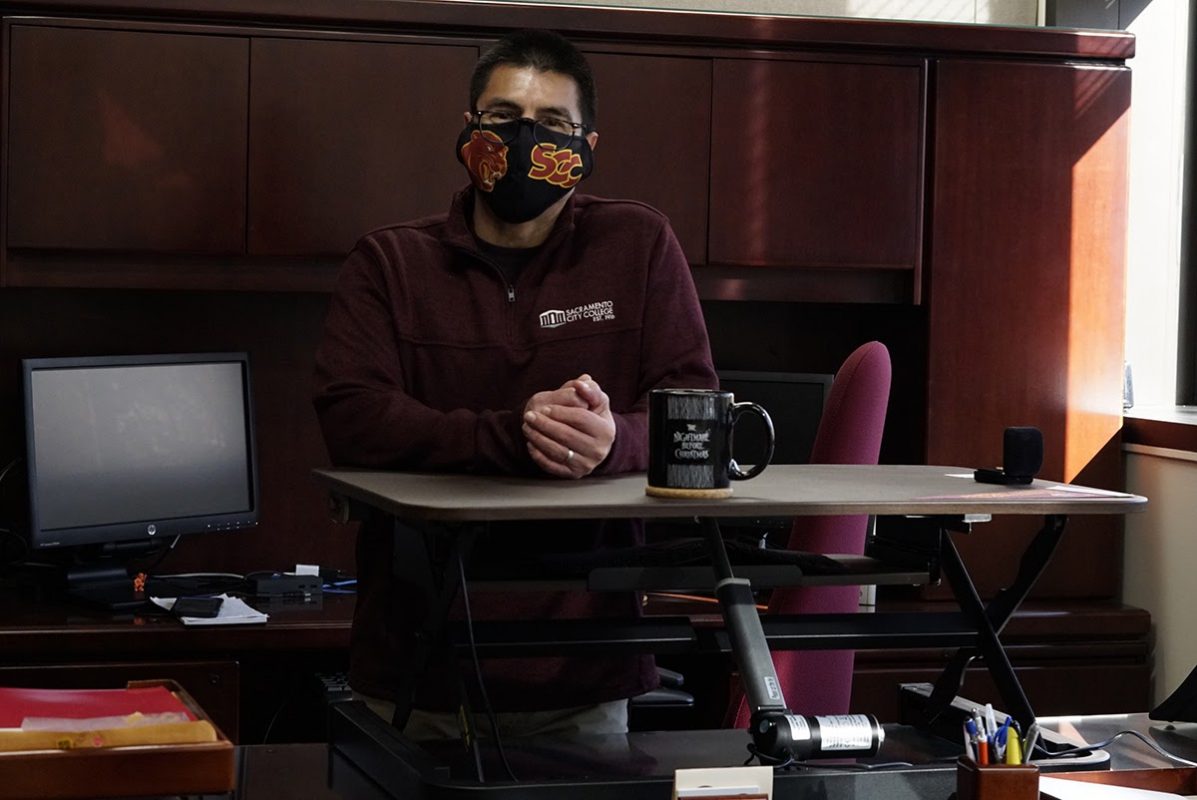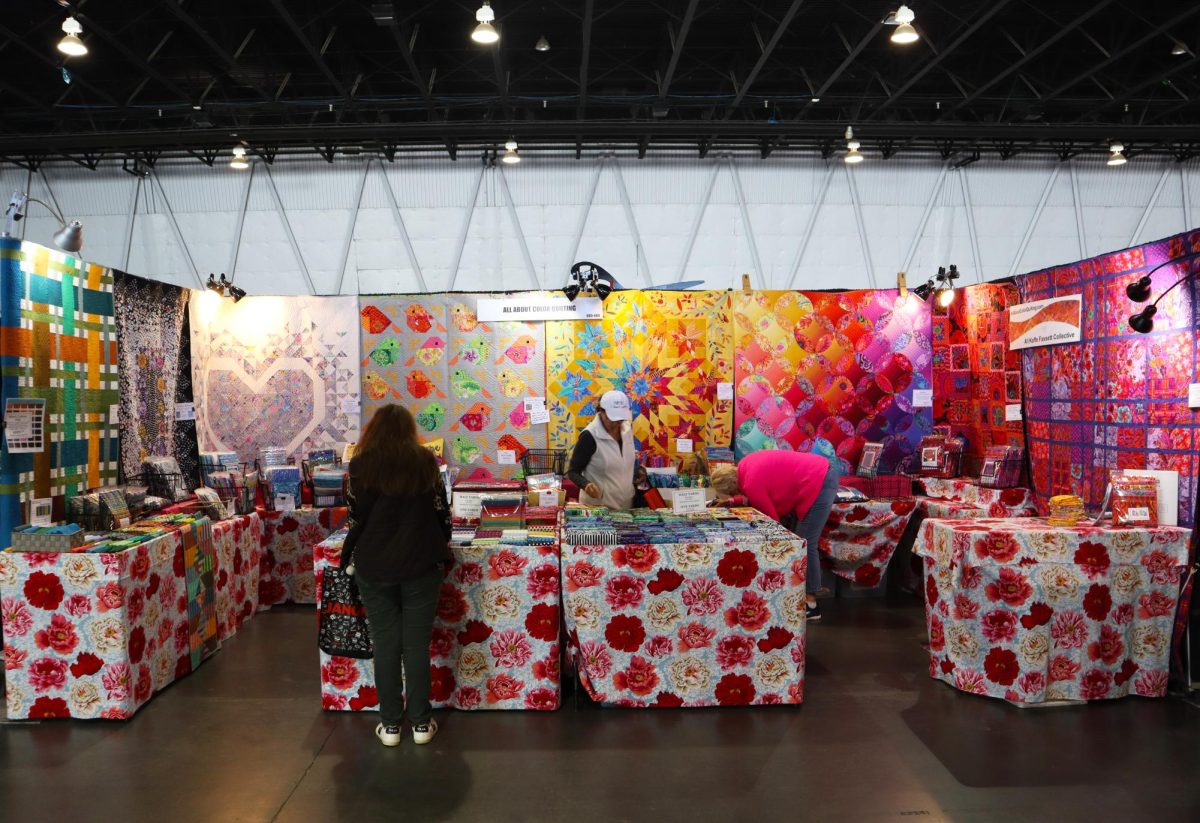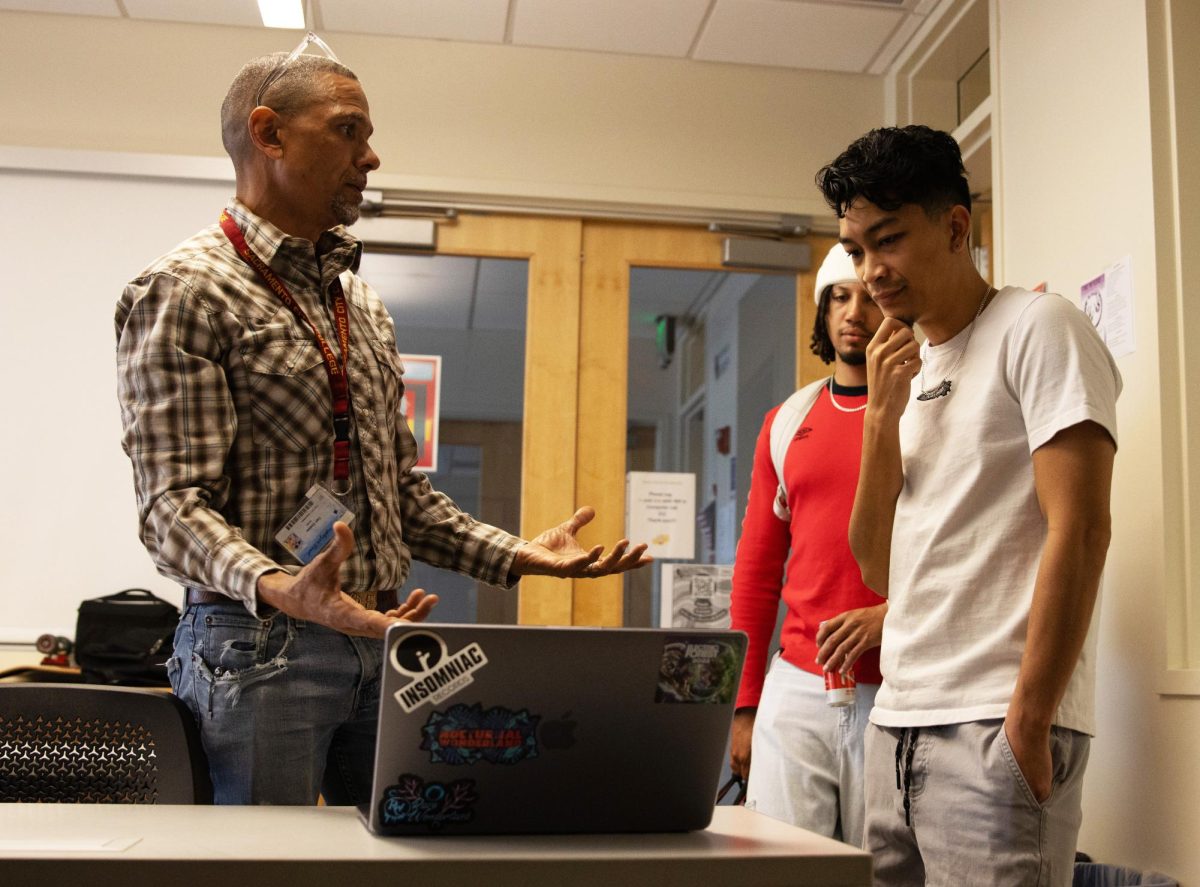Sacramento zoo is located in Land Park, across the street from City College. Beyond the zoo gates stands a sign that encourages, “Please stay an alligator’s length apart.” Added in small writing is a note defining that distance as 6 feet.
On the south side of the zoo, a black, raspy tongue stretches toward the fingers of a young boy wearing a cloth mask as he stands on a platform at the giraffe paddock. The giraffe’s head and the boy’s body are nearly equal in size, and a tongue, 20 inches long, extends to grasp the leaf of romaine lettuce in the boy’s hand.
According to the zoo’s website and social media pages, the opportunity to visit Sacramento Zoo has once again been impeded by restrictions brought on by COVID-19. The zoo closed Dec. 10 for the second time in 2020. The first closure lasted three months, from March 14–June 15.
The 14.7-acre zoo is considered small, according to Lesley Kirrene, the zoo’s director of institutional advancement & marketing. She recalled that the trouble began March 14 when, under guidance of the California department of public health, the zoo and other city facilities like museums and playgrounds were ordered to close.
“We made a decision on [March 13] and closed that Saturday. It was virtually no lead time,” Kirrene said.
Considerably stretched for space, officials at the Sacramento Zoo have hoped to relocate for nearly 30 years.
Dominic Larsen is a membership assistant at the zoo where he’s worked for over a year. He is also a student at City College majoring in political science and environmental studies. Larsen was scheduled to work the day that zoo employees learned they’d be closing to public access and reducing staff. He said that, when that day began, staff members were confident that drastic changes wouldn’t be necessary, noting that other states had seen a more severe spread in COVID-19 cases at the time.
“It definitely was a bit of a shock. Around lunchtime, someone called in and asked if we were going to remain open. I took the call. We reassured him that we weren’t closing. We had word from the county and the city [earlier that day] that it looked positive,” remembered Larsen. “An hour or so later, the CFO of the zoo [Robert Churchill] came in and let us know that we were clos[ing] down. We [announced the closure] on social media and sent out emails to all of our members. It definitely was a day I remember well.”
Larsen recalled a similar sense of panic in his City College classes before the move to remote instruction. Some of his instructors opted to make the move to online learning ahead of the campus-wide change March 18.
“I remember professors telling students a week or so before campus closed, ‘We’ll do class online [to] get used to it if you need to,’” Larsen said. “It was not what any of us were expecting at the beginning of the year.”
Zoology major Brandon Fuentes is the Sacramento Zoo’s special projects coordinator and Registrar. He’s worked at the zoo since he was 16, enjoying a tenure of 12 years in various positions. He’s currently in charge of animal transfers in and out of the zoo, coordinating with other zoos and parks across the United States.
On March 13, Fuentes, instead of working on zoo grounds, was crossing the California/Arizona border with animals for a new exhibit.
“I was actually traveling with the alligators,” Fuentes said. “We [had] just recently opened an alligator exhibit at the zoo. When they crossed the California border, I had to be present because all of the paperwork was in my name. It wasn’t the most opportune time.”
“We’ve been very cautious. Pre-COVID, you could do behind-the-scenes tours through back areas. You can’t do that anymore. The staff wear gloves and masks. We interact with animals as little as possible,” Kirrene said. “We try to keep them wild, you could say. The primates are conditioned to offer their arm for a blood test or their chest to listen to their lungs. All of those things are still being done, but we take full precautions when any of our staff have to get closer than any visitors might get.”
While the zoo remained closed earlier in the year and again at the end of 2020, daily animal care and maintenance of exhibits still requires the presence of essential zoo staff. To keep staff and animals safe, Kirrene said that non-essential staff are encouraged to work from home. Even after reopening in June, the zoo’s indoor facilities remained closed. This includes the insect and reptile house, which, Kirrene said, will remain closed indefinitely.
“We have animal care and veterinary staff that [has] to be there every day to take care of all of those animals. With a living collection of almost 1,200 animals; we aren’t like the Crocker [Art Museum] where we can close our doors and turn the lights off,” said Kirrene. “[The reptile house is] an old building. The narrow path through is meant to be one way. We didn’t feel it was safe [to keep it open].”
According to Kirrene, it cost approximately $1.38 million to maintain the zoo during its initial three-month closure, without the revenue stream from visitors. These expenses included food for animals, payroll, medical care for animals and park maintenance.
“When the zoo is closed—just to run the zoo, care for the animals, maintain the facilities—it costs us $460,000 every 30 days,” Kirrene said. “We’re projecting about a 46% lower attendance as opposed to what was projected for the year.”
When the Sacramento Zoo reopened June 15, Kirrene said it was forced to limit attendance to 1,500 guests daily. In October, she said, the zoo was given approval to increase that number to 2,500 guests, who were instructed to follow safety precautions to enter.
“You had to have a mask to get into the zoo, and, if you couldn’t maintain 6 feet [of] distance [between people outside of your pod], you had to wear the mask. We have unique signage that asks people to ‘stay with their flock’ when they come and ‘maintain an alligator’s length distance between flocks.’
“In a normal year,” Kirrene continued, “we’re the No. 1 attended city-owned amenity in Sacramento. Our typical attendance is slightly above 500,000 people a year. With the three month closure and [daily attendance limit], we’ll have less than half of that number this year.”
The reduction in operations is projected to result in $3 million loss in revenue, according to Kirrene’s records. She said that the zoo initially furloughed half of its 121 employees.
“My team oversees marketing, public relations, fundraising and special events. It was significant,” said Kirrene. “I had a team of 11, and now have a team of two. We rehired 20 folks after being able to reopen in June, so we currently have 79 employees [at the zoo].”
Due to the staff reduction, fewer people circulate on zoo grounds. But they also have new permanent residents. Several animals have given birth to welcome additions to the zoo’s population, including a new red panda baby named Stevie Nicks.
There are three pairs of red pandas at the zoo. The Sacramento Zoo participates in the Association of Zoos and Aquarium’s survival plan for the endangered red pandas, housing two of the pandas, a breeding pair, which the public does not get to see.
“One pair is on exhibit and the other is a breeding pair. The[ir] off-exhibit space [is] both indoors and outdoors and not visible to the public,” said Kirrene. “That’s the pair that had a baby last year and again June 24. Nobody can see her. It’s a significant birth. She’s robust and healthy and doing great.The pair we have off-exhibit is very genetically valuable.”
Stevie Nicks, the red panda cub, will have limited exposure to human beings. According to Larsen, extra care has been taken to ensure she remains healthy in her vulnerable state of infancy.
“I have not been able to see our new red panda cub. Right now she’s being kept [in the] red panda outdoor yard [in] a building right behind it. There’s only ever two [red pandas] on exhibit at all times,” Larsen says. “Especially with young animals, we try to ensure that they grow properly with all the right care they need in those early months. It’s kind of like people waiting to announce a pregnancy because of all of the things that could possibly go wrong.”
As the zoo endured its initial three-month closure, zoo staff noticed that some species appeared to have registered the absence of attention from zoo visitors. Fuentes said he saw a slight change in the behavior of some animals due to the change in foot traffic.
“The initial first few times I popped on grounds to get paperwork, I made the rounds around the zoo,” Fuentes said. “I definitely saw an increased interest in the animals as I was walking around. A lot of the animals that typically had no interest in folks walking by or paying attention were now extremely interested in somebody there. It was really interesting how quickly they changed then noticed that something was different.”
Kirrene also saw different reactions from some of the zoo’s permanent residents.
“Some of the animals like the primates and big cats and even our two ostriches did seem to notice [the absence of visitors]. Having people around is a form of enrichment for them,” Kirrene said. “It gives them something to watch and interesting things to look at. I heard reports from several people that the lions would hide and stalk people that would walk by.”
In addition to the baby red panda, other new residents include a new Wolf’s Guenon named Vinny born Sept. 8, two thick-billed parrots, and a Masai giraffe. As an accredited institution with the Association of Zoos and Aquariums, the zoo follows breeding recommendations for many of its endangered species.
“We’re the most successful zoo at breeding [thick-billed parrots] in the country. They’re endangered,” Kirenne said. “Any time there’s a birth, it’s always significant and exciting. We just had a Masai giraffe born [Sept. 20], and she’s stinkin’ adorable. To be able to contribute to the population of an endangered species is pretty amazing.”
Births haven’t been the only factor increasing the zoo population. The zoo has also opened an alligator exhibit and one featuring spider monkeys. It has also added two ostriches and a sifaka (a type of lemur).
In contrast to the excitement that surrounds the babies, the zoo also experienced a significant departure this year. Coconut, the snow leopard, moved to the Oglebay Good zoo in Wheeling, West Virginia, Nov. 13. Now an adult male, Coconut was born at Sacramento Zoo Aug. 18, 2018.
“He’ll be missed by visitors and zoo staff alike,” Kirrene said. “He had a rough start. He was born with Swimmer’s Syndrome. He couldn’t get his front or back legs underneath him. He also had inverted eyelids, so his eyelashes scratch his cornea. Fortunately, our veterinarians are all graduates of UC Davis’ vet program. He has had a couple of surgeries where they basically just freeze off his eyelashes.
“Because of all of his health issues, he is neutered, but they’re solitary animals in the wild. We’re fortunate that he and his mom have gotten along for as long as they have,” continued Kirrene. “He’s a robust, mature male now, [which could have] change[d] at any moment, so this is a natural move and it makes it possible for his mother and father to breed again down the line. We just don’t have the space to hold three snow leopards independently.”
Typically, school field trips offer students the direct tactile opportunity to experience how animals from a variety of environments and climates appear, move and live. That valuable resource is still available at the zoo, though it is not possible to have classrooms at the zoo nor would it be safe to transport animals out of the park to visit schools, if they were open. Kirrene noted that zoo staffers have tried to instead reach fans in other ways.
“One of the things we’re becoming more and more proficient with is remote programming. We used to have tens of thousands of school children a year visit the zoo. We would go out to the schools in our zoomobile and visit with classrooms,” Kirrene said. “None of that is possible right now. Staff have become much more proficient with providing virtual programming either for teachers and full classes or for parents who’d use it for home schooling or distance learning. That’s something that’s here to stay to some degree.”
Though no one at the zoo wanted to see it close again, the current staff is used to safely operating a closed facility, according to Kirenne. She said they’ve had enough practice to determine what staffing levels are necessary to maintain and care for the animals.
“Having done it once before, we’re certainly more prepared. We’ve got all the PPE stacked and backlogged. We didn’t have that before,” said Kirenne. “Because so many people were laid off, we’ve converted open work spaces and open desk areas into COVID individual pods. If the animal care staff needs to take breaks, they’ll have someplace safe to go.
“We’re also more prepared to get the zoo ramping back up and staff it up. We’ve got a lot of things in place that certainly weren’t in place in March.”

